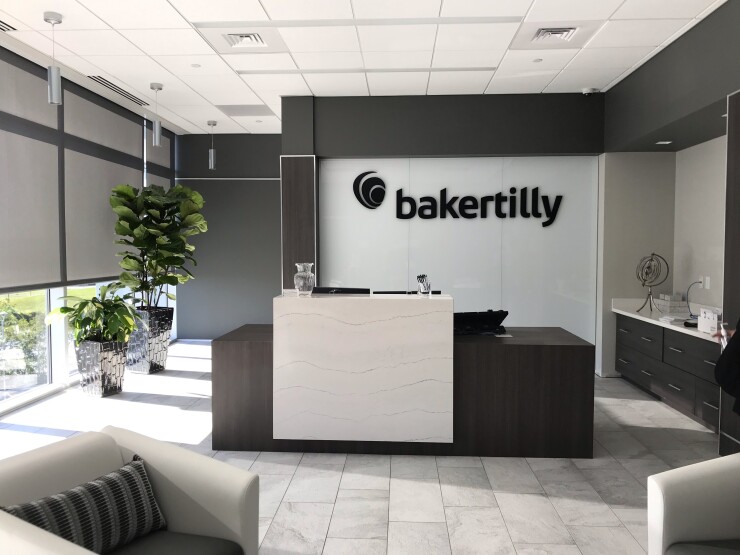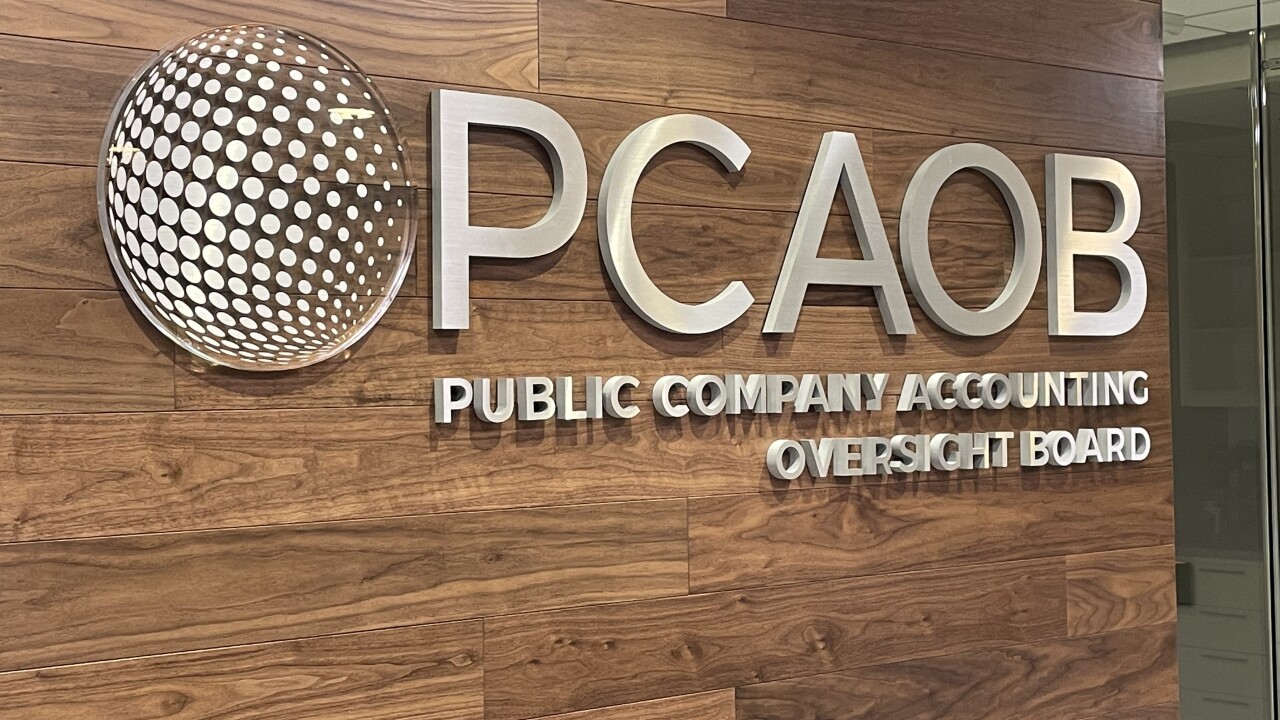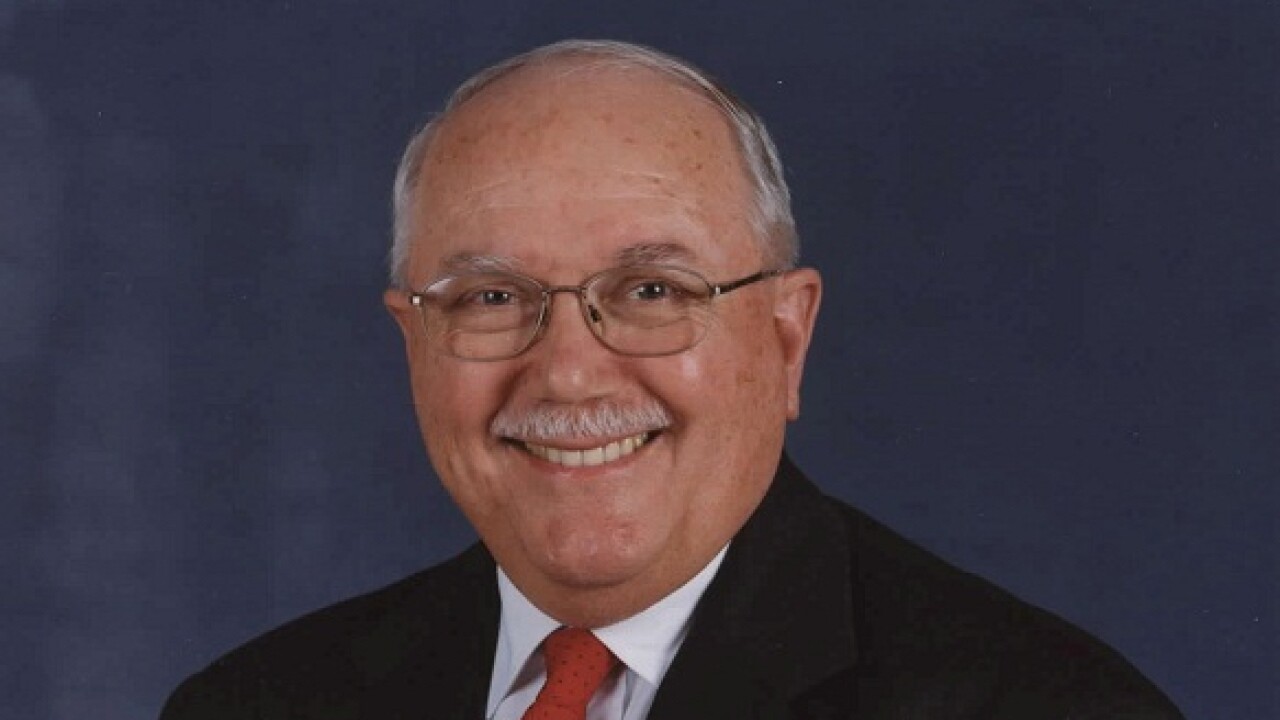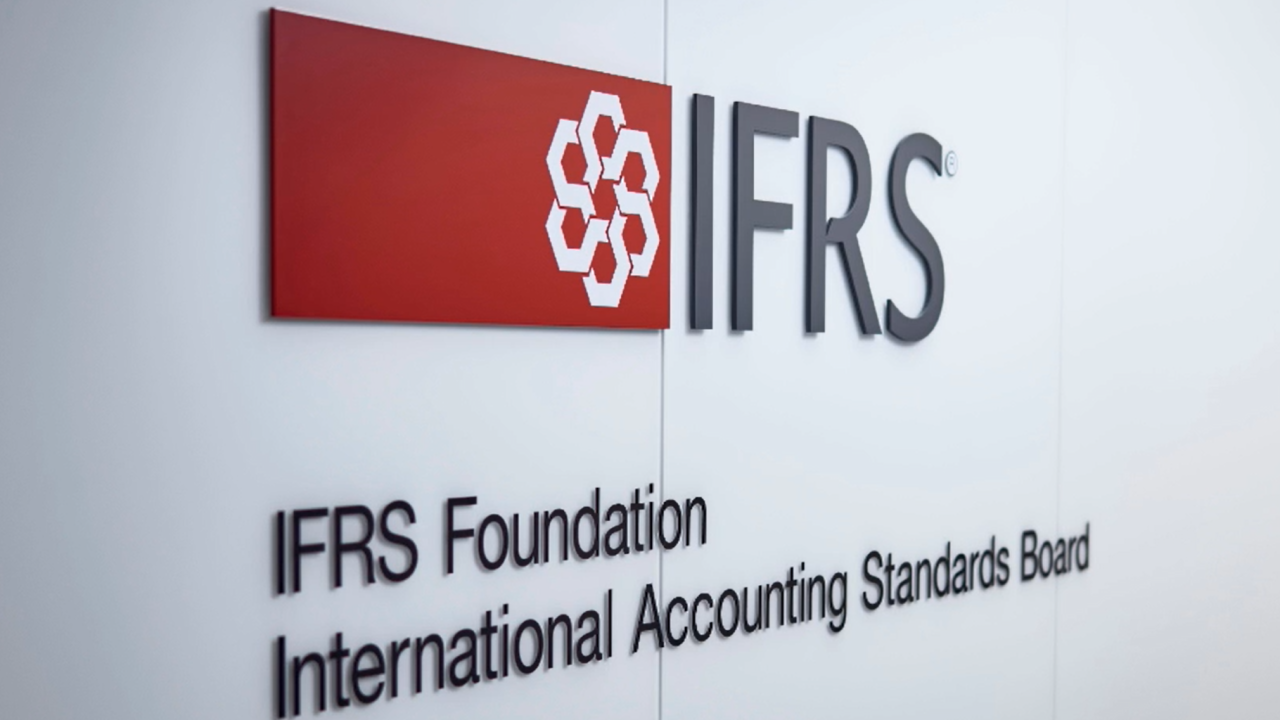
While there's certainly no question that the merger of Top 25 Firms Baker Tilly and Moss Adams will create one of the biggest accounting firms in the country, the role of M&A for the combined organization isn't about size at all.
"M&A is important going forward in how it makes us better, not how it makes us bigger," Moss Adams chairman and CEO Eric Miles told Accounting Today, Miles will become CEO of
"Our focus from the get-go is, how do we immediately bring more value to our clients?" said Baker Tilly CEO Jeff Ferro, who will continue in his role until the end of the year, and then serve on the firm's board. "Whether that's bringing a capability or an industry depth — like bringing the real estate capability Baker Tilly has to the West Coast markets, or Moss Adams' deep focus on technology to the East Coast and Midwest markets."

"Second to that, and part and parcel of that, is how do we make this a positive experience?" he continued. "How do we accelerate our people's careers? Giving them more opportunity, making sure our teams are excited."
Before the deal was even completed in early June, Baker Tilly had a strong M&A strategy, which will carry over to the combined firm.
"We'll continue to invest in some of the big major metro money centers," said Ferro. "I would see New York, Boston, Chicago, the West Coast — specifically San Francisco, Southern California, Los Angeles — and we'll continue to invest in Texas, and we'll continue to try to build up in the Southeast where we need to continue to build Atlanta and Southern Florida. So we'll continue from a geographic perspective in those areas."
Geography isn't the only focus, though: "We'll continue to look at industries — probably smaller organizations; you would refer to them as tuck-ins, we would look at them more as strategic — but on the advisory side I think that we probably haven't scratched the surface on the types of complementary services that we could bring into our middle-market client base, so we'll continue to do that," Ferro explained.
Living in the middle
More than geography and more than any specific service line, the middle-market client base Ferro mentioned is a critical focus for the firm.
"Our entire strategy revolves around the middle market and revolves around the upper, middle, and lower ends of that market," he explained. "And we think we have a clear advantage because we're so heavily in that. We don't have a lot of distractions related to some of those larger public companies. Not that middle-market companies aren't public — we have them, but we're not as concentrated on doing a lot of work for, say, that Fortune 1000, maybe, as I think some other firms are."
Prior to the merger, Chicago-based Baker Tilly ranked No. 11 on Accounting Today's 2025 list of the

Together, they would have ranked No. 6, right in the midst of the group of four or five firms that form the tier directly below the Big Four — a group they have no intention of leaving.
"Our expectations would be that we could get to the fifth largest firm," said Ferro, "but we have absolutely zero intention or zero strategy of trying to become part of the Big Five. That's not our sector. That's not our client base. That's not really what we want to do."
The other firms in that tier — RSM US, BDO USA, CBIZ and Grant Thornton — also serve the middle market, but Baker Tilly is confident in the face of the competition.

"I don't think it's a zero-sum game," said Miles. "The midmarket is a big portion of the economy. Both [Moss Adams and Baker Tilly] think first about, 'What do our clients need? How do we become most valuable to them?' And so that's what drove this, and let me get more specific: Everyone throws around the term economies of scale. This is real when you think about the needs of the midmarket."
The services middle-market clients need have grown significantly over the past 10 or 15 years, he continued, citing international capabilities and technology as two important areas, and he is confident there's room for all the large firms in the space, and particularly for Baker Tilly.
"Again, I don't think it's zero sum," Miles said. "I think it's great for the mid-market if these firms have a real focus and understand the needs of the mid-market. I think we're being very, very deliberate and clear on what we're going to say no to, so we can say yes to the mid-markets even better."
Inside the deal
The merger process began a little over a year ago, after Baker Tilly had signed
Its growth strategy at the time included a "pretty aggressive" M&A component.
"We had categorized that into three different categories — tuck-ins, strategics, and then transformational," explained Ferro. "And concentrating on the transformational, we looked at probably five firms or so, maybe six, that we looked at as being transformational. And I'll tell you that, at the onset, we said, 'Hey, if we ever were fortunate enough to be able to do something with Moss Adams, that would make the most sense from a geographic perspective."
Moss Adams was going through similar internal discussions in parallel.
"We started looking at the changes occurring in the profession in a really rigorous way maybe over a year and a half ago … and we looked at how can we remain status quo or should we do our own private equity deal or should we merge up, and we reached a conclusion that a merger with a peer is the right path forward," said Miles. "And then we took probably the same list that Jeff had for transformational M&A, and we looked at five or six peer firms from a lot of different angles, and it was clear to us that by far Baker Tilly is the best fit for Moss Adams. So it was a bit of fate that we both had processes that came together at the same time."
Just around a year ago, Ferro and Baker Tilly's COO had lunch in Chicago with Miles and Moss Adams' COO to open the discussion, according to Ferro, "and by August we were in conversations with them, and we spent about nine or 10 months putting together the deal."
With Moss Adams' heavy presence in the West — it has been by far the largest independent firm in the region for some time — and Baker Tilly's strong representation in the Midwest and the East, the two firms complemented each other geographically, but also in terms of industries served and services offered.
"If you looked at it from just a pure geography perspective I don't know that you could have drawn it out any better," said Ferro. "And our industries lined up. We have a lot of similar industries and where we were different, it was a good different — you know, they do things that we don't do that we'd like to do. We do a few things that they don't do that they would like to do. So the differences were good."
Whatever differences they brought, however, there was one immutable commonality, according to Miles: "Both firms were very clear-eyed in that our strategy was the middle market. If we were to do something together and become bigger, it isn't to necessarily serve a different segment, but is to serve our existing segment, the mid-market, even better. And we understood that the clients in the mid-market are undergoing their own changes that require more from a professional service firm, from a public accounting firm, than in in the past."
Looking ahead, the two leaders see both challenges and opportunities in integrating their two firms.
"These are two large complex firms that do many, many things well," said Miles. "We get the opportunity to choose the Baker Tilly legacy way, the Moss Adams legacy way, or design something brand new. That's a challenge because it can be hard, but it's an opportunity because we get to rethink everything. And that again comes back to designing for the mid-market, to choose the best processes for what we are and will be in the future."





